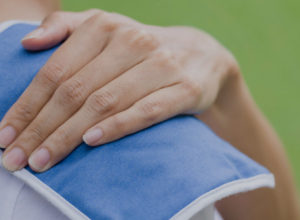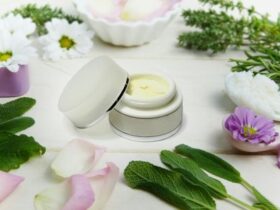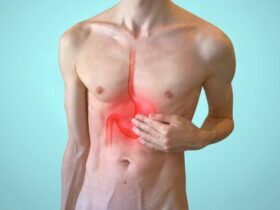Hot and cold therapy can be extremely effective and affordable pain relief remedy for different conditions and injuries. The crucial part is to understand when to reach out for an ice pack and when to go for a heating pad. Sometimes alternative heat and cold treatment is the perfect pain relieving solution.
The general rule of thumb is to apply cold therapy for acute injuries or pain, along with inflammation and swelling. Heat therapy helps muscles relax and is suitable for muscle pain or stiffness. Never use heat on a joint that is already hot, red, and irritated. Similarly, you should not apply cold therapy to a joint that’s stiff and immobile.
The alternating heat and cold therapy which involves applying heat for 20 minutes followed immediately by 20 minutes of cold therapy is often recommended by physical therapists and trainers to treat pain in the hands and lower body.
What is Cold Therapy (Cryotherapy)?
Cold therapy, also known as Cryotherapy is the application of low temperatures to slow down blood flow to an injured area thereby reducing pain, muscle spasms, swelling, and inflammation. It temporarily lowers sensitivity to pain, which helps relieve pain that comes with sprains, sore muscles, stretched ligaments, injured joints and strained tendons.
The time tested pain relief remedy dates back to 3000 BC and is repeatedly mentioned in ancient Egyptian medical text known as ‘Edwin Smith Papyrus’. Ancient Greeks were well aware of the pain relieving benefits of heat and cold compression therapy. Today, with the advancement of technology we have the luxury to apply cold therapy benefits through advanced cold therapy systems and topical pain relievers.
How Cold Therapy Works?
Cold therapy employs principle of Pain Gate Theory to reduce the perception of pain. According to pain gate theory, the perception of pain in our brain is regulated by nerve endings. Cold therapy decreases nerve transmission in pain fibres. Low temperature numbs the nerve endings of the painful area and sends a cold sensation to the brain. The cold sensation hinders the pain signals from reaching the brain by increasing the pain threshold.
Additionally, cold therapy reduces the rate of cell damage and swelling which is directly related to pain. Low temperature created by ice cools the skin’s surface and underlying tissues, which constricts the blood vessels of the injured area by a process known as vasoconstriction. Vasoconstriction of blood vessels decreases the leakage of fluids into the tissues. As the cold continues to penetrate the skin, the cold-induced vasoconstriction decreases the oxygen requirement of cells. The reduced metabolic rate of the injured cells provides relief from muscle spasms and lowers pain. Cold Therapy is recommended as soon as injury has occurred. It is most effective when used within 72 hours of injury.
Cold Therapy Types
There are various methods which can be used to apply cold therapy to an affected area depending on the body part to be cooled and the type of injury.
- Cold packs and Frozen Gel Packs
- Cooling Pads
- ice massage
- Gel caps to be worn on the head
- Cold compression wraps
- Ice baths
- Cryocuff
- Topical Pain Relief roll-ons, gels or sprays
The benefits of Cold Therapy:
Cold therapy is substantially beneficial for providing quick relief from chronic pain, muscle aches, inflammation, bleeding and swelling. Some of the major advantages of cold therapy are-
-
Cold Therapy is Drug Free
Cold therapy is free of NSAID medication. It is safer than oral pain killers and doesn’t cause complications like addiction, drug overdose, or other harmful side effects. People who are reluctant to use painkillers and want a natural pain relief remedy find cold therapy as safe and easy alternative. It is found that the people who use cold therapy require none or much less pain relief medication, which helps them resume their daily routine quickly.
-
Cold Therapy on All Inflammation Related Ailments
The exposure to cold temperatures raises adiponectin levels in the body, which makes cold therapy an effectual technique for treating all major inflammation related ailments. According to the study published in the International Journal of Rheumatic Diseases, cold therapy was found to be highly effective in providing pain relief to people suffering from fibromyalgia. Cold Therapy temporarily reduces nerve activity, which helps relieve pain that comes with sprains, sore muscles, stretched ligaments, injured joints and strained tendons. It is especially beneficial for athletes, and gym buffs who suffer from stiff neck, lower back pain, muscle soreness and knee pain. It is regularly recommended by doctors to people suffering from tendonitis, rheumatoid arthritis, osteoarthritis, fibromyalgia, multiple sclerosis, autoimmune disorders, spondylitis, psoriasis, dermatitis, plantar fasciitis, sciatica and osteoporosis.
-
Cold Therapy is Self Care & On-the-Go Treatment
The cold therapy is an easy, safe and effective pain relief home remedy. The huge advantage of this self care technique is that you can be independent and active while it’s healing your body. Topical pain relievers are an alternative method to apply cold therapy. You can apply topical pain reliever cream, gel, spray or roll-on directly onto the stiff and sore muscles and let it air dry. The FAA compliant size of Topical Pain Reliever Roll-On is great for individuals who want to keep up with their active lifestyles. These pain relief products contain ingredients like Menthol and Camphor to provide quick relief from chronic pain and muscle aches using pain gate phenomenon of cold therapy.
-
Cold Therapy is Beneficial for Kids
Kids love sports and outdoor activities. We as parents must keep our children motivated, healthy and pain free, to enable them reach their full athletic potential. Unfortunately, sports related injuries in children are estimated to be 2 million. More than 3.5 million children under age 14 receive medical treatment for sports injuries annually in USA. Cold Therapy is a safe, non-invasive and drug-free treatment for sports-related injuries for adults and kids alike. It reduces inflammation in muscles and joints, and improves body metabolism, immunity, stamina, mobility and flexibility. On May 2, 2016 the NJSIAA (New Jersey Interscholastic Athletic Association) recommended non-medication treatments like cold therapy over prescription drugs for children.
Cold Therapy is the preferred treatment method for children with special needs. The results of a study provide evidence that when cold therapy was combined with conventional physical and occupational therapy methods for children with spastic cerebral palsy, it reduced spasticity and translated into practical functional gains in the gross motor skills such as hand function.
-
Targeted Pain Relief from Cold Therapy
While using ice to apply cold therapy is a compelling way to reduce pain, it does have certain disadvantages. Placing ice or frozen items like bag of frozen peas directly on skin can cause ice burns and damage the skin. The other harmful effects of using ice are skin irritation, stiffness, temporary pain and numbness. The inevitable leaks as the ice melts make it further messy. The specialized cold therapy wraps provide better coverage than a simple ice pack. Cold therapy wraps that conform to the body and have more uniform contact allow the therapeutic cold to reach all the damaged tissue in the injured area. The topical pain relievers and cold therapy systems with compression wraps are the ideal choice to apply targeted cold therapy.
-
Cold Therapy is Recommended by Physical Therapists & Surgeons
Cryotherapy due to its numerous benefits is frequently recommended by health care professionals, chiropractors, physical therapists, orthopedic surgeons, athletes, trainers, and coaches to relieve aches and pains, sore muscle, or discomfort. It is highly recommended by orthopedic surgeons after hip or knee replacement surgery to reduce the amount of blood loss and pain. It was found that cryotherapy improved the range of movement and flexibility of the knee joints for people with osteoarthritis.
Depending on the location of the injury, physical therapist recommend cold therapy along with rehabilitation exercises like targeted stretching, strengthening exercises or massage therapy. According to research, people with hand arthritis got better pain relief from topical pain relieving creams when used in conjunction with hand massage in comparison to hand massage alone.
How to Apply Cold Therapy
Cold Therapy P.R.I.C.E. Principles
The P.R.I.C.E. principle involves all the components that are required to effectively begin the healing process and prevent further injury. Applying P.R.I.C.E principles correctly can significantly help in faster recovery.
P.R.I.C.E. stands for:
- P – Protection
- R – Rest
- I – Ice
- C – Compression
- E – Elevation
Protection
Protection of the damaged tissue is vital to prevent further damage. a support or splint is the best way to protect the injured area.
Rest
In the early stages of injury, rest is one of the vital components of the P.R.I.C.E principle. The duration of rest depends on the severity of the injury and the type of tissue damaged. For example, a severe knee pain that makes walking very difficult needs to be completely whereas minor muscle sores only requires reduced activity, example limited or no use of affected muscles.
Ice
The application of ice to an injury substantially decreases the extent of the damage. Ice is usually applied to the injured area using ice bag or cold pack for 10 to 20 minutes several times a day. A cloth, gauge or damp towel can be used as a barrier between the ice pack and skin to eliminate the risk of ice burns.
Compression
Applying compression to an injured area minimises the amount of swelling. Compression should be applied for the first 24 to 72 hours from the onset of injury. Compressing the injured limb increases the pressure within the tissue thus narrowing the blood vessels (vasoconstriction). It plays important role in preventing excessive bleeding.
Compression can be applied in a number of ways. The most effective method is by using a compression bandage, which is an elasticated bandage that simply fits around the injured limb.
Do Not Combine Cold Compress and Topical Pain Relief-
If you are using Topical pain relief or coolant sprays, do not apply compression. Patients with Fibromyalgia and arthritis are normally advised to use hot and cold compresses. However compresses should not be applied at the same time as topical pain relief products. Hot and cold compresses can possibly alter the rate at which the topical cream is absorbed through the skin. Also, the topical pain relief products blur the cold and heat perception, and using the compresses at the same time can lead people to unwitting burn or damage their skin.
Elevation
Elevation of the injured limb allows gravity to drain the fluid away from the injured area. This aids in decreasing the swelling which in turn may decrease the pain. If you suffer from lower limb injuries, try to keep the ankle elevated above the level of the hip. For upper limb injuries, keep the arm elevated in sling or rested on a pillow.
Depending on the area of your injury is, you might want to try stretching and strengthening exercises that can support the area as recommended by your healthcare provider.
Who Should Not Use Cold Therapy
People with sensory disorders, diabetes and cardiovascular or heart disease must consult their doctor before using cold therapy.
Cold therapy should not be used on stiff muscles or joints.
Cold therapy should not be used if you have poor circulation.
Stop the cold therapy immediately if you experience severe numbness in the area you’re applying the cold therapy. If cold therapy does not help your pain go away, or swelling persist, contact your healthcare provider.

Dr. Haseena Hamdani, MBBS, DGO, PGD Endocrinology and Diabetes (USW) is a Gynaecologist, currently practicing in Gaborone, Botswana since the last 17 years. Prior to setting up this clinic she worked in India as well as in Zambia, as a Gynaecologist and Obstetrician and was also associated with an Infertility center. She is also an online tutor for the University of South Wales.














Leave a Reply